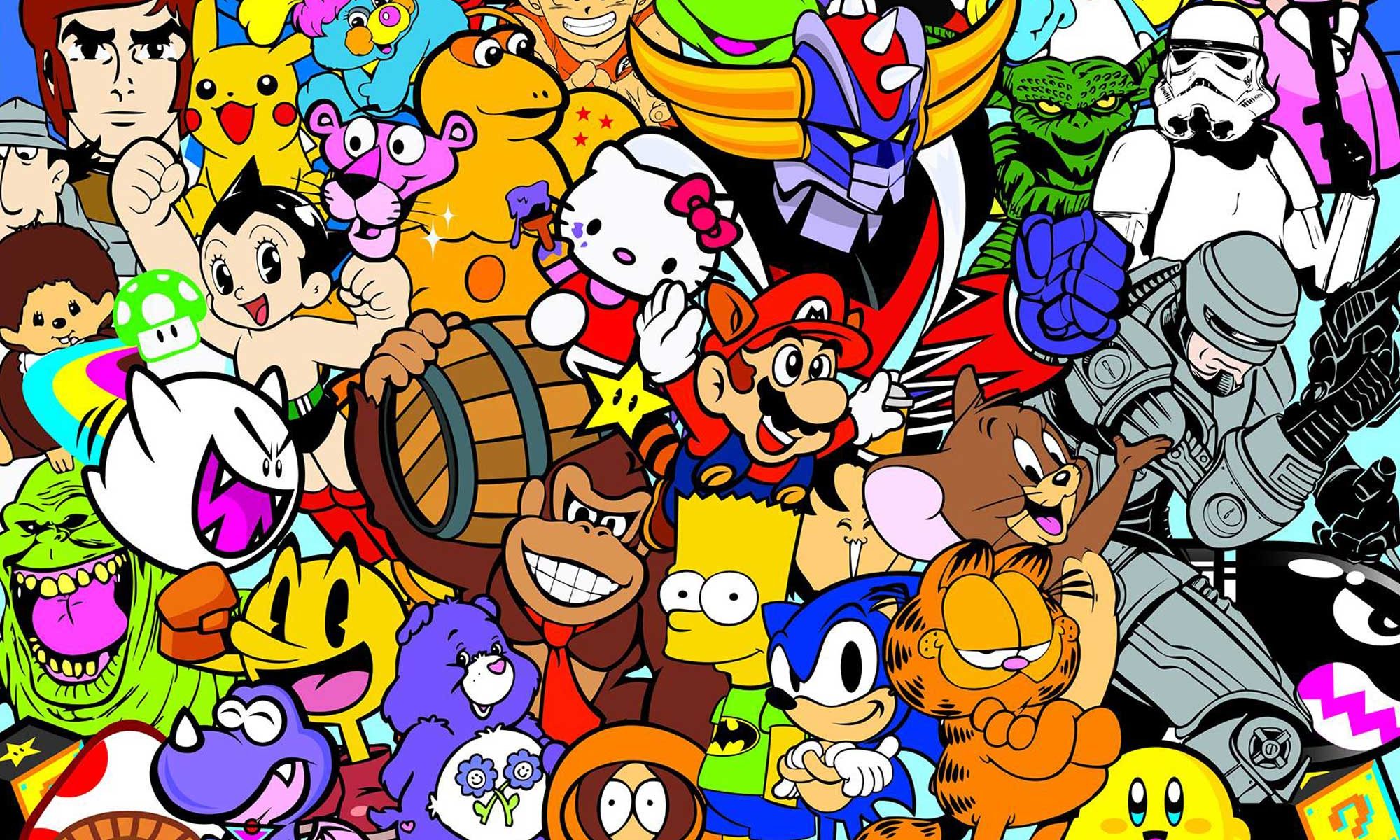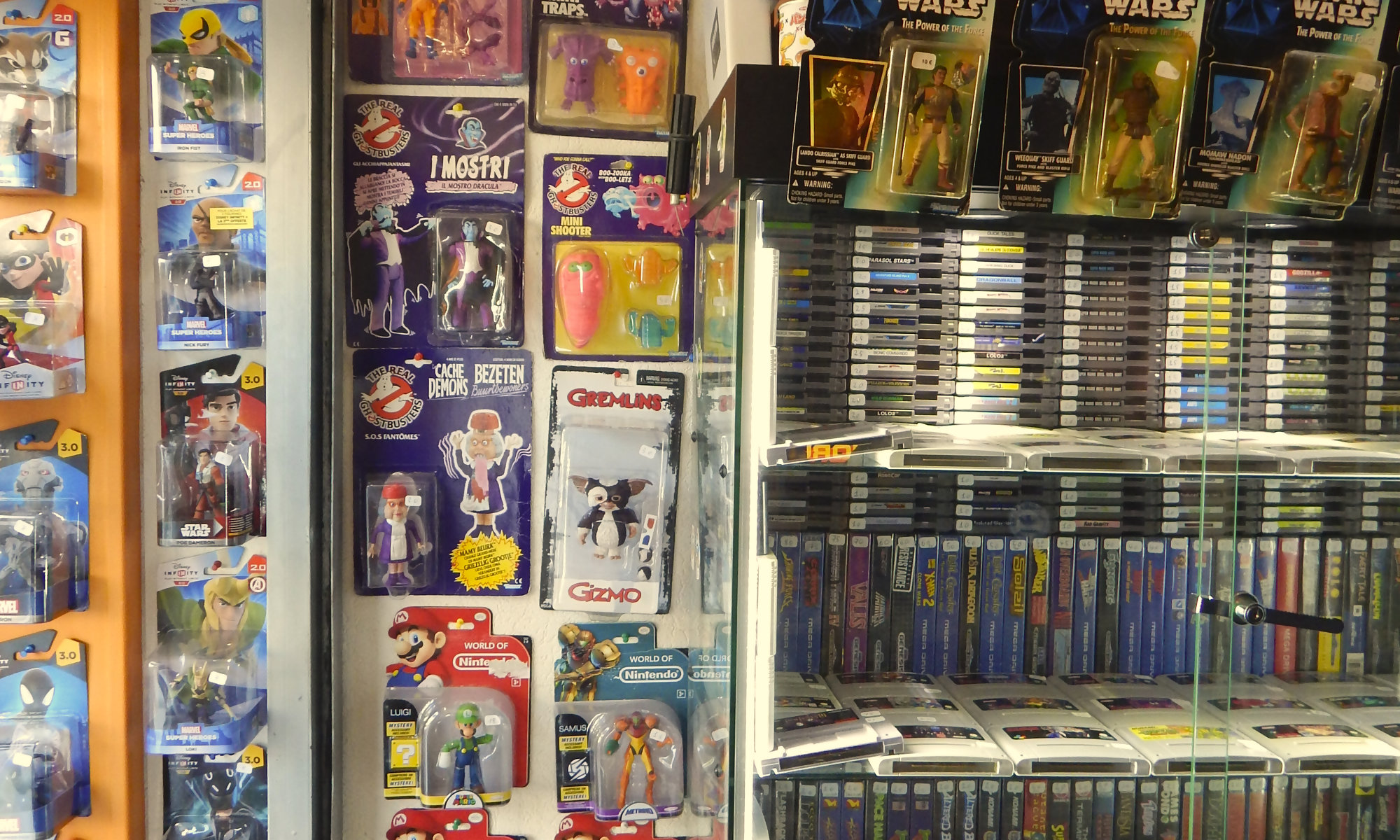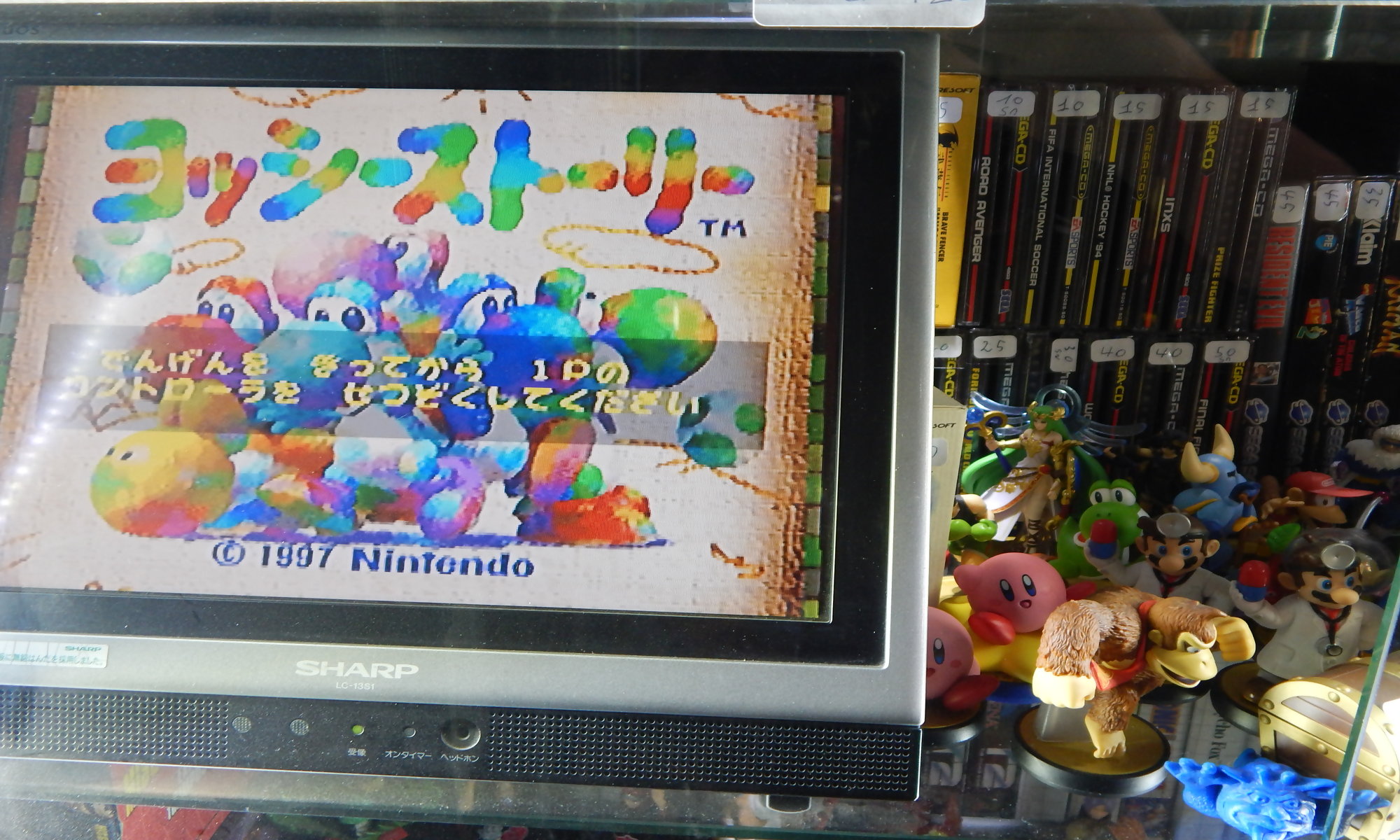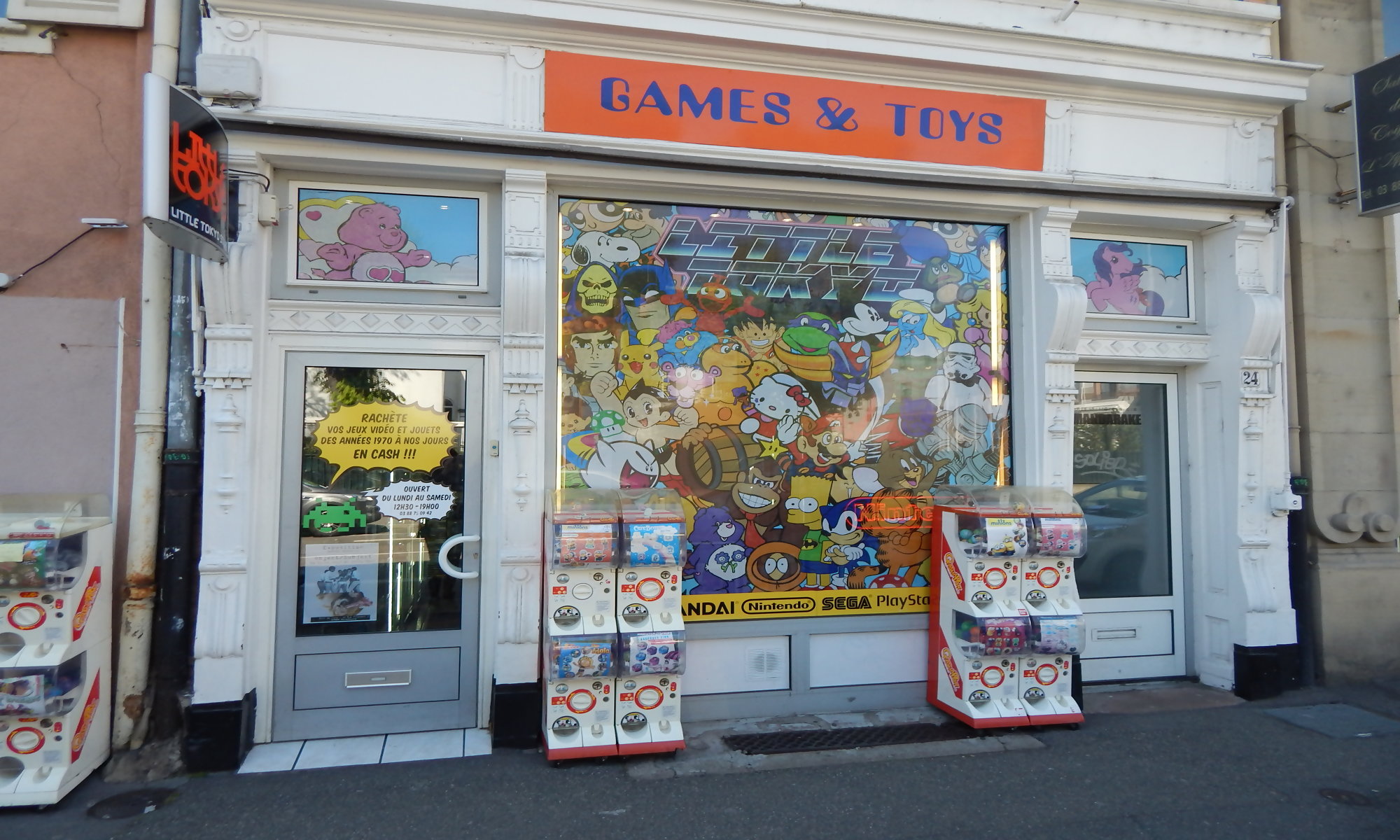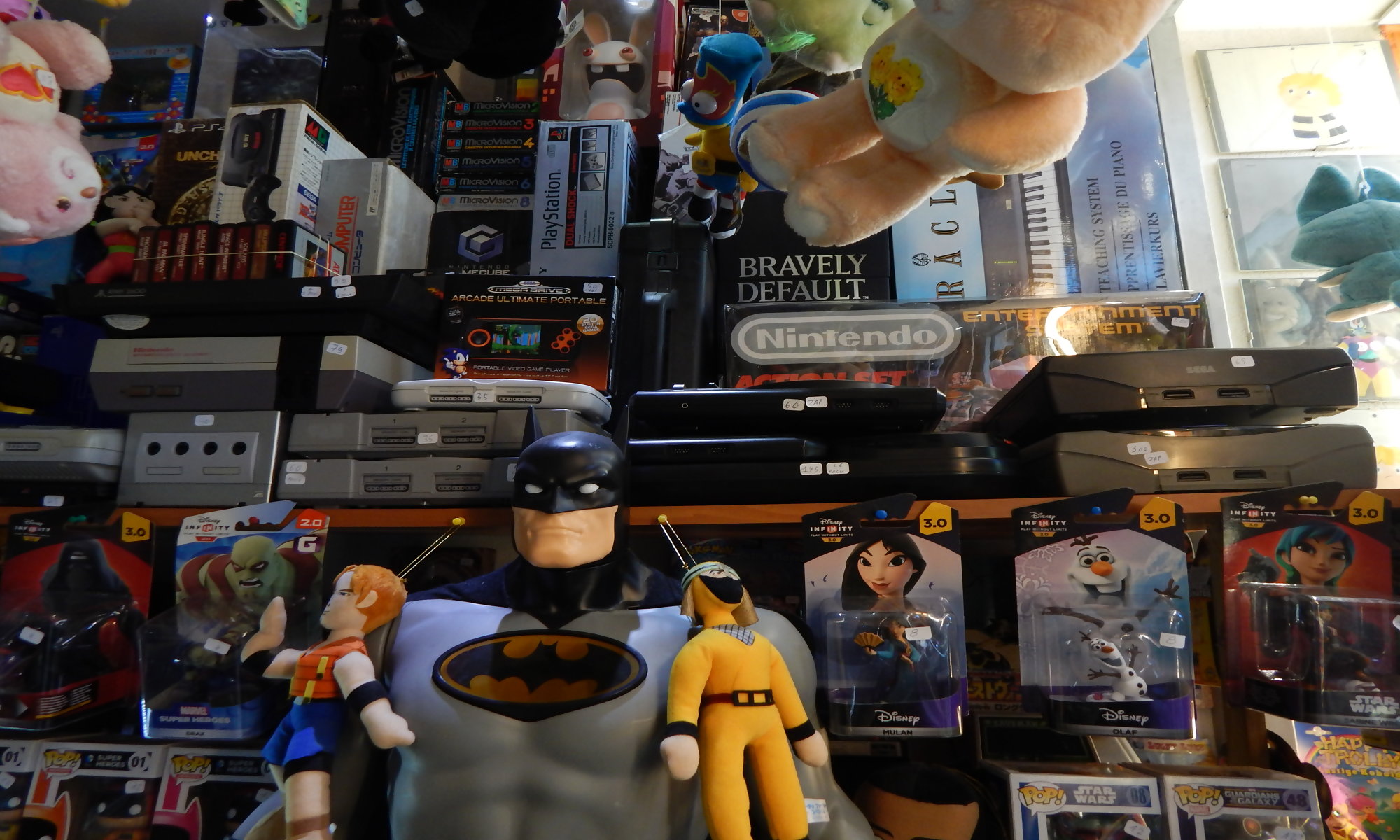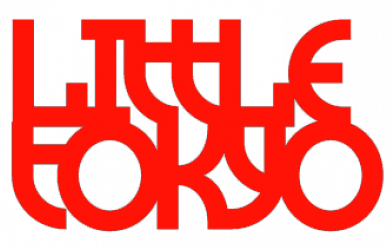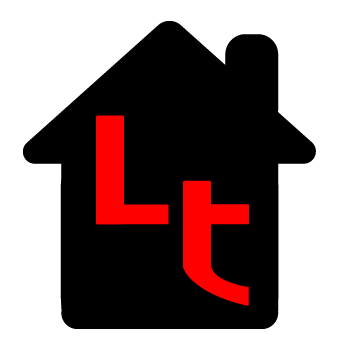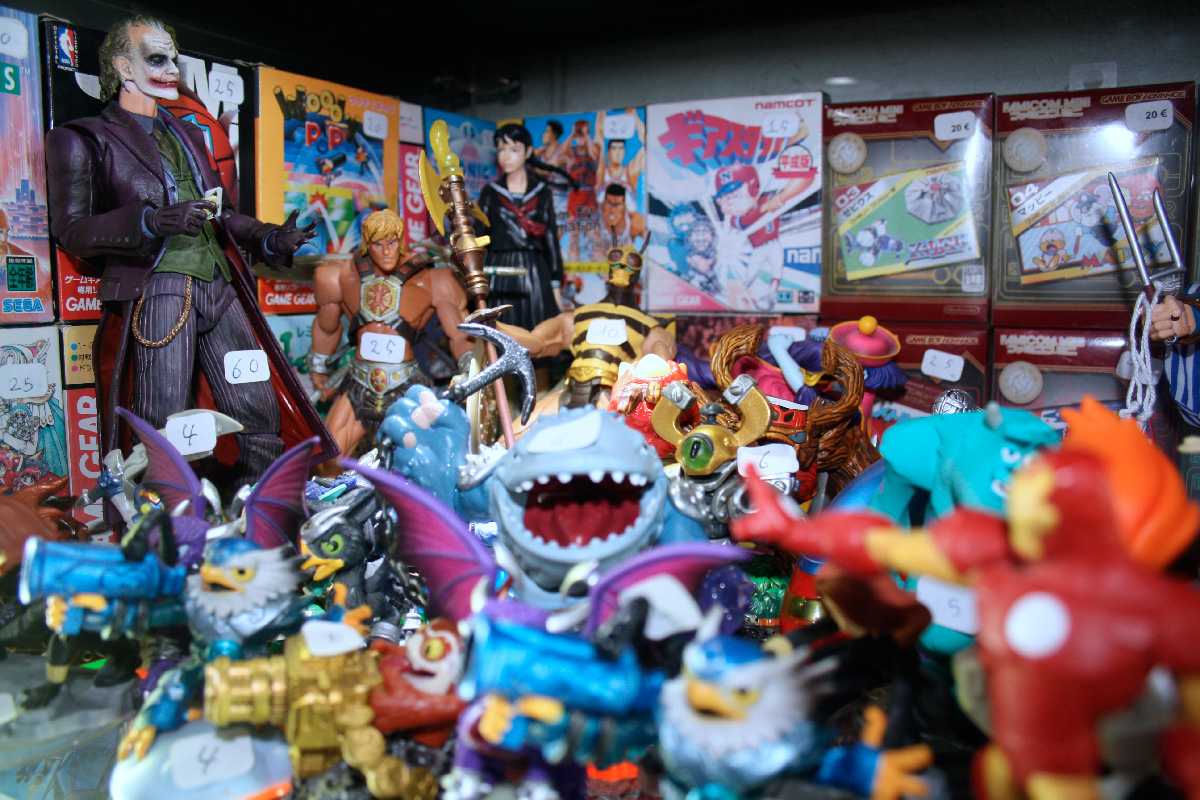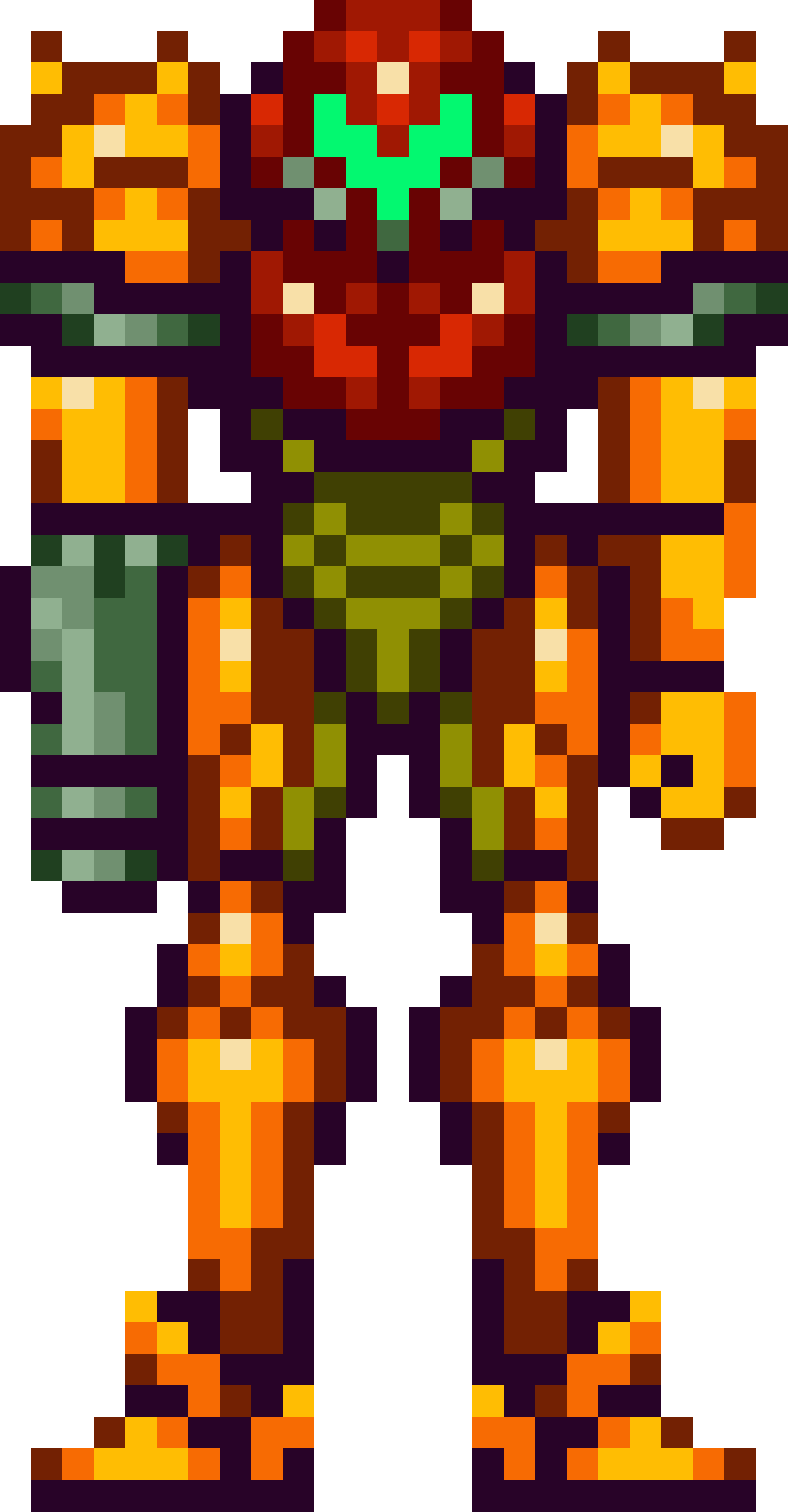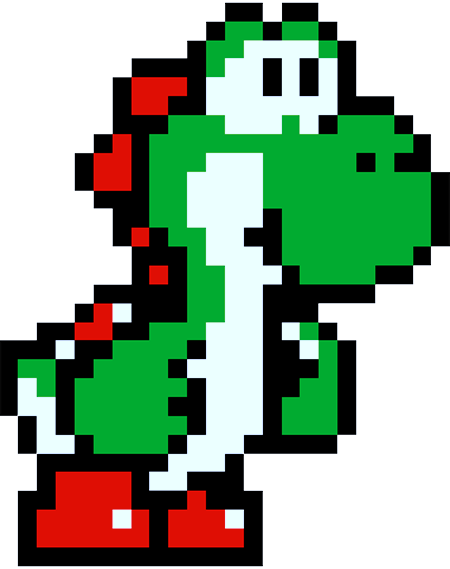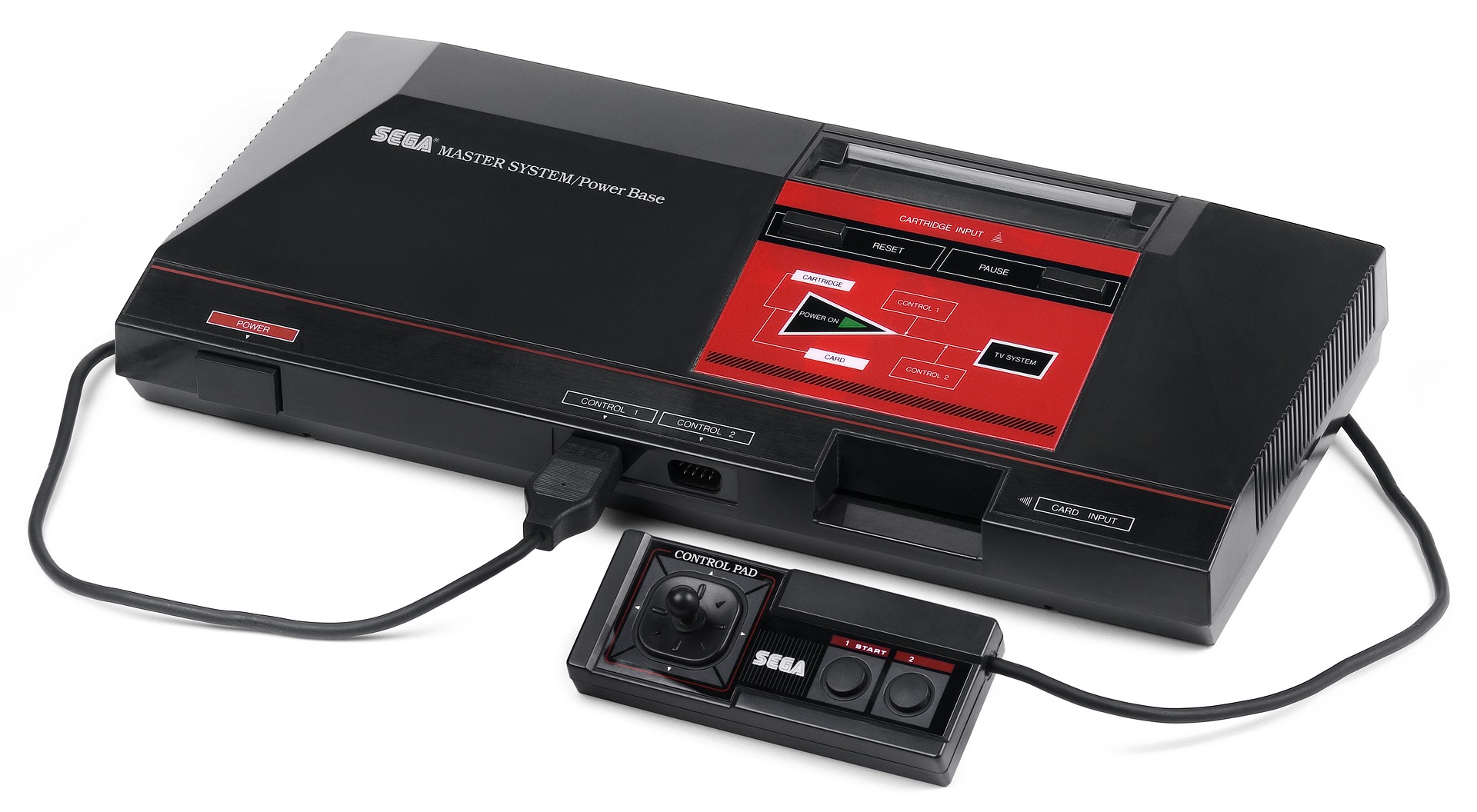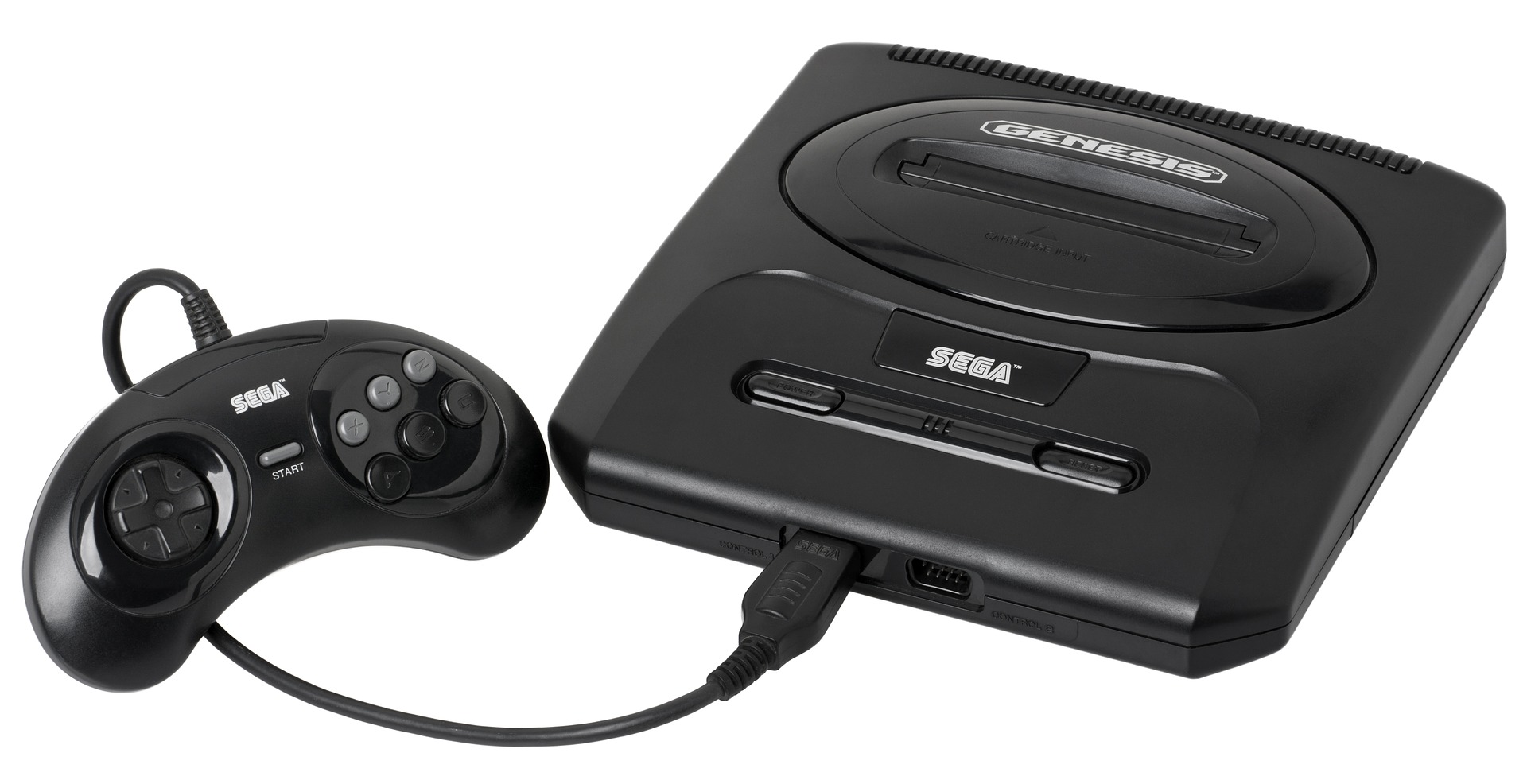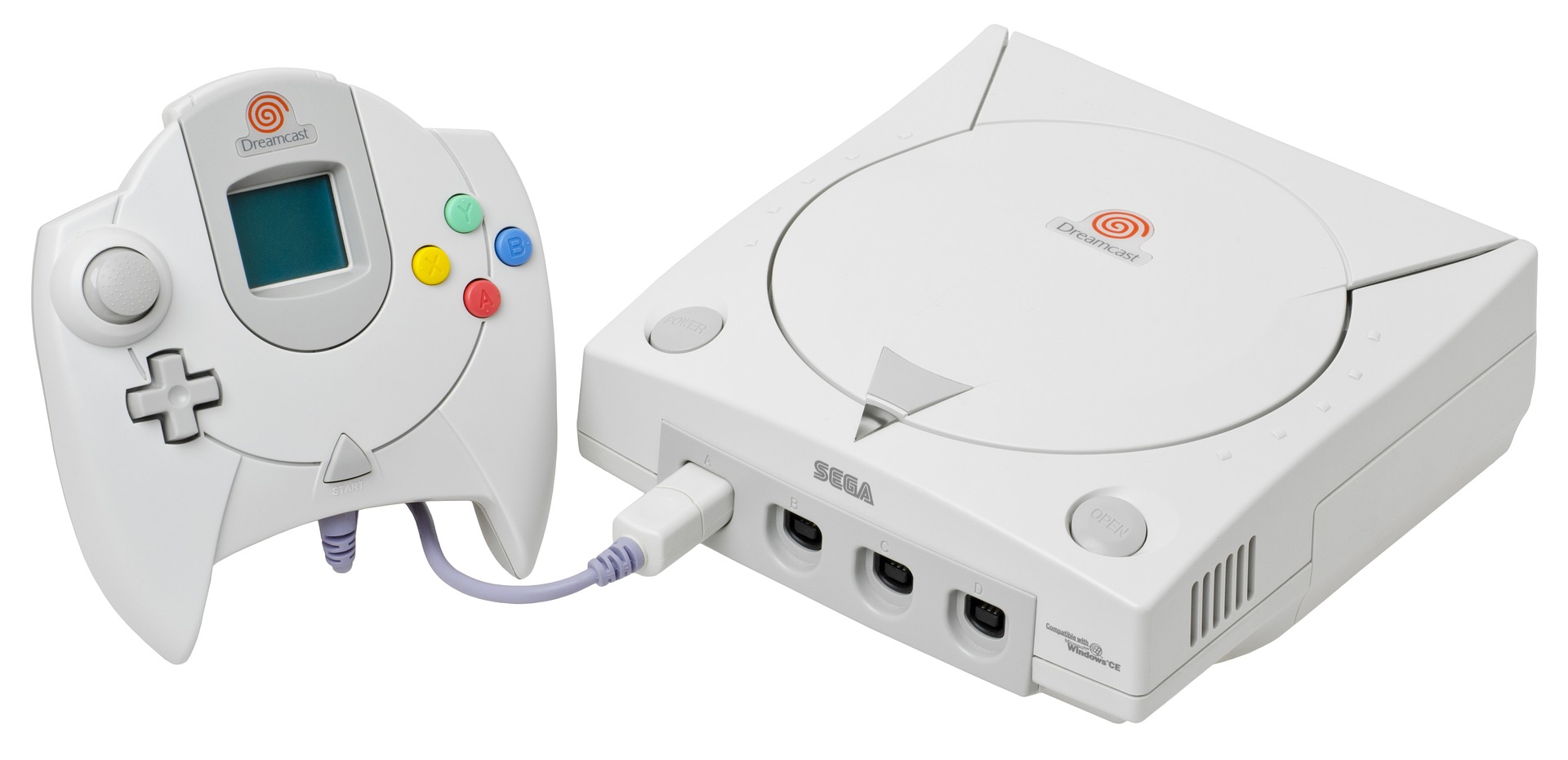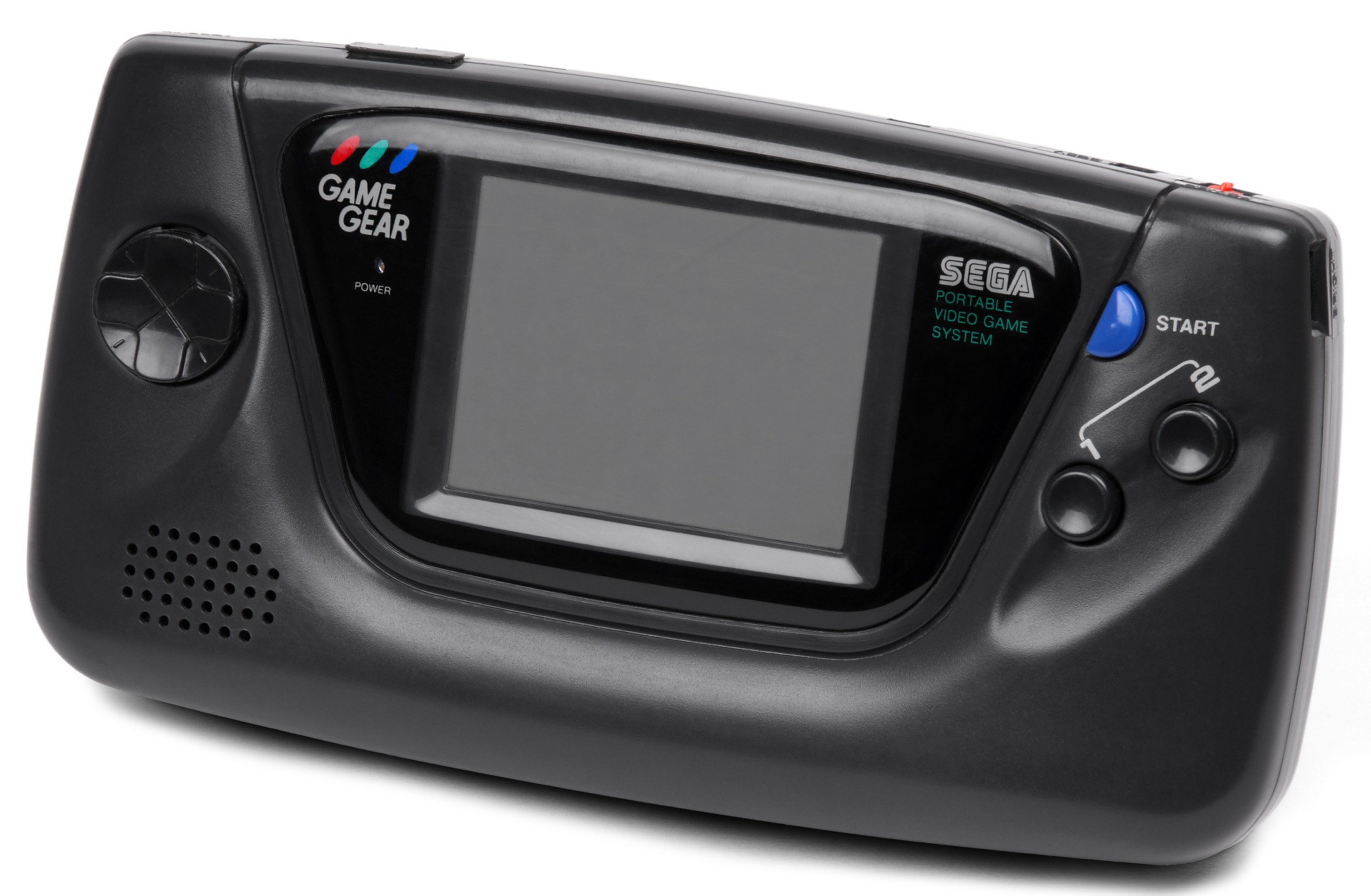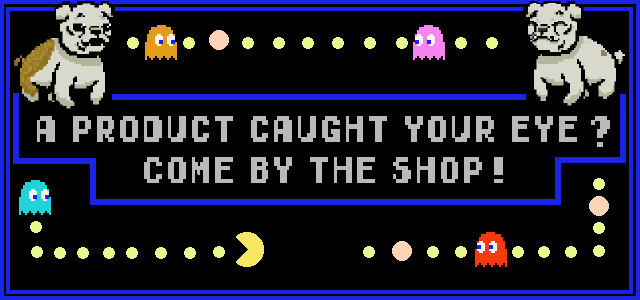
Some of the best Sega consoles
Here is a list of some of the consoles that were key players in the history of Sega, and in the history of retrogaming in general.
The Master System
From the « SG-1000 » to the « Sega Mark III »
First appeared in 1985 in Japan (1986 internationally) the Master System (or “SMS”) is actually the third version of the “SG-1000“, the first 8-bit console from Sega. The latter, as well as its “computer” version with keyboard, the “SC-3000“, was exclusively released in Japan on July 15, 1983, the exact same day as its terrible competitor, the Famicom of Nintendo, which was more popular. Sega then launches the “SG-1000 II” (also called “Sega Mark II“): It is more powerful than its predecessor, has unpluggable joysticks and has a “Sega card” reader, sort of built-in floppy games, unlike the original “SG-1000” that needed an external accessory called “Card Catcher” to be able to read these Sega cards. But even the Mark II does not manage to seduce the Japanese, which drives Sega to take out the heavy artillery: In October 1985, the Sega Mark III emerges in Japan. In response to the simultaneous international launch of the NES and with the opportunity of its non-Japan marketing in 1986 in North America, its look will be “futurised” and it will be renamed “Master System“.
The Master System arrives in Europe
It will be discovered later that if the Master system, yet largely technically superior to its competitor, did not have the expected success in the USA face to the NES, it is largely because of a non-competitive (rather unfair) clause that Nintendo has made sign to some large third-party developers which prevent them from publishing any game for other rival consoles. Nintendo will also be prosecuted later in 1991 for violating the United States antitrust law forcing the brand to abandon some of its licensing policies.
So, in 1987, Sega was fed up with Nintendo and his low blows. Sega decides to aim a market that the firm of the moustached plumber has (almost) not yet touched : Europe. And there, the success is immediate, the console is selling very well (and finally even better than the NES on this market), especially when Sega will nominate “Virgin Mastertronic” as the official distributor of the console throughout Europe. Virgin Mastertronic will attract a lot of big European game publishers, which is going to enrich the SMS Games catalogue, already gradually supplemented by Sega’s famous arcade games.
The “Master System II”, an attempt of revitalization
The 1990 release of the “Master System II”, with updated design and at lowest cost, was also designed to boost the low sales of the Master System in the US. But it did not sell very well either, because it must be said that in 1989 the legendary Mega Drive was already out there, and was emerging in Europe…
The Master System is really a fantastic but underrated console including awesome games like Alex Kidd in Miracle World, Psycho Fox, R-type, Phantasy Star or even Sonic the Hedgehog, which will come out a little later in 1991. In addition, some very funny optional accessories are available, such as the “Light Phaser” pistol or the “SegaScope” 3d glasses. Come take a look in the store, we may have it in stock!
 Did you know ?
Did you know ?  Next
Next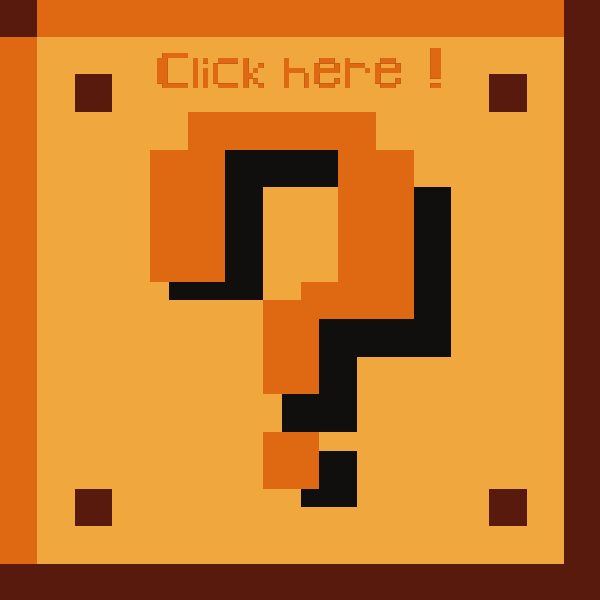
1
The Master System would have been named so to compare the video industry to the world of martial arts, both very competitive and ruthless, in which only a “master” (hence the name “Master System”) can be at the top.
2
Although Sega stopped producing the SMS in 1992, the console still continues to be sold today… In Brazil! The reason behind this is that, in the 1980s, Sega had the to join the firm “TecToy“, one of Brazil’s biggest toy manufacturers, allowing Sega to always have support in this country. In Brazil, import taxes are very high, so the fact of being associated with a local builder was a huge asset. Nintendo had completely ignored this yet huge market because Brazil equates to about 2/3 of the US population, and has an equivalent strong interest in video games.
Thanks to this fruitful cooperation, according to a Brazillian website report “Uol Jogo”, in 2012, 5 million of SMS were on the market, and today, 150,000 consoles still continue to be sold every year !
TecToy also produces Mega Drive. When Sega stopped producing the SMS and the Mega Drive, TecToy continued to produce newer versions of these consoles as well as new games. A HDMI Mega Drive with a SD card port is even currently in production.
The Mega Drive / Genesis
Undisputed symbol of the Blue Hedgehog brand, the Mega Drive is to Sega what the NES is to Nintendo.
Nintendo Vs. Sega : the merciless “Consoles War”
In the late 1990s, Nintendo‘s 8-bit console, the NES, ruled in the North American and Japanese video game market. Rather than compete the NES with another 8-bit console (the Master System did not have a good track in the USA), Sega decides to make a strong move and take the world of video game to a new era: the 16-bit era.
It was during the life of the Mega Drive that the famous and ruthless “Consoles War” between Nintendo and Sega broke out, during which the “Balance of power” did not stop leaning in favour from one to the other: the Mega Drive appears on the market as the first 16-bit console ever released, and this initiative allows very good sales, but in 1989 there will be a slow down because of the release in 1988 of the unavoidable “Super Mario Bros 3 ” on the NES. Sega had to react, create something unavoidable, a “killer game” that would change the course of history… And so, in 1991, Sonic was born. The success was immediate and many players (mostly Americans) rushed to buy the pack including the console and Sonic, which also saw its price drop by US $10, making the Mega Drive, the cheapest 16-bit console of the time. But the scale goes on Mario’s side again when Nintendo released the Super NES the same year! Followed in addition by the release of the popular “Donkey Kong Country” in 1994…
Due to this constant fluctuation in the dominance of market shares, it is very difficult to identify a real winner in this war. Sales figures vary widely from one source to the next: if you rely solely on Wikipedia you can see that compared to the Mega Drive, the Super Nintendo is largely leads in terms of sales, but a lot of fans and specialized magazines refute these numbers and even say that it is actually Sega which won this “War of the Consoles” , at least in America, as shown in point 11 of this small article, or this document of the NPD group.
A must-have
But sales don’t matter: The Mega Drive is for many, one of the best console of all time supporting a library of more than 900 games including essential and exclusive titles such as Streets of Rage 2, Sonic 2, Shinobi 3, Strider, and so many others. The Mega Drive also has a lot of accessories and extensions that enhanced the console, like the MegaCD which allows you to play games in CD format (as well as audio CDs, (for example), the 32x that improves the skills of the console, the Master System converter that allows to play games of the Master System, as well as many other wacky accessories like the Sega Mega modem , the Mega CD Karaoke unit, and many others! Come to the store for more info!
 Did you know ?
Did you know ?  Next
Next
1
The Mega Drive had more than 12 official variations created by Sega and other companies such as JVC with its “Wondermega”, Pioneer with the “active laser”, Majesco with the “Genesis 3”, etc.
2
TecToy, a Brazilian toy builder, still continues to produce Genesis, in several versions, as well as new games. Tectoy also produces Master Systems, which are quite popular in Brazil.
3
The reason why the Mega Drive had to be renamed “Genesis” when it was launched is a still source of mysteries. The most common hypothesis is that the name “Mega Drive” was already taken by a company based in the United States. Others say that the name Genesis, was chosen because the Americans are very pious, allowing the console to have a more positive image. Others say that it was to show that the console was the “beginning” (Genesis) of a new era, the one of the 16-bit consoles, or the one of the end of Nintendo’s domination…who knows. For more details, I recommend Steven Kent’s book “The Ultimate History of video games.”
4
The Sega marketing strategy for its Mega Drive was well thought out because it aimed at teenagers who grew up in the era of 8-bit consoles by presenting the console as a “cool” machine during its advertising campaign. Its customer range was therefore theoretically wider than the one of the Super NES, which essentially targeted children.
The Saturn
Despite its rather tragic history, the Saturn is now a highly prized retro gaming article because it has brought together many fans, who consider that the console would have been the most epic machine of all time if its complex hardware had been properly exploited. The proof is, games such as Street Fighter Zero 3, released at the end of the life stage of the console, present a gameplay, a fluidity of animation and a breathtaking 2d quality.
The necessity of 3D technology
At the beginning, the Saturn had to be a console proposing a catalogue of mainly 2d games, because of the high coasts of the 3d technology, (like the arcade system “Model 1” of Sega and its very famous “Virtua Racing” and “Virtua Fighter“), and because Sega thought that maybe the world was not ready for the 3d rendering yet, given the failure of the 3DO. But when Sony presented its PlayStation, capable of launching powerful 3d games, making the Saturn and the “Model 1” look like ancient relics, Sega decided that actually, 3d was needed.
Sega’s strategic mistake
It is therefore completely redesigned that the Saturn was born in November 1994 in Japan. At the beginning, it gets off very well with, in just two days, over 250,000 consoles sold thanks to the hugely famous Virtua Fighter game included in the package. However, in April 1995, Sega hastily releases the console to have the upper hand over Sony’s PlayStation … but this turned out to be a serious error of timing, because the Saturn went out in a very quiet summer period and almost without any noise, neither the press nor the distributors had the time to promote it. In addition, Sega made a secret agreement with the three retail chains of Toys “R” Us, Babbage’s and Electronics Boutique by sending them preleminary draft of 30,000 consoles before an imminent outlet. But this surprise announcement did not please to many distributors, and especially to KB toys, which totally refused to sell the Saturn, which would make the distribution of the console ineffective.
This was fatal for the Saturn, in spite of a price drop to 299 dollars, the release of three excellent games (like Sega Rally Championship, Virtua Cop or Virtua Fighter 2), only one month later, the PlayStation was already selling three times more. Moreover, developing was difficult due to the complex hardware (which gave a hard time to third-parties developers) as well as the cancellation of the game project “Sonic X-Treme“, supposed to be the first Sonic game in 3d and the flagship of the console, also strongly contributed to the fall of the machine.
Despite this mixed success mainly due to Sega’s very bad decisions, the Saturn is nevertheless a fantastic and unique console, if you like arcades games, no need to go further: the Saturn is surely the retro console of your dreams (with the Dreamcast, his successor), because a large part of it’s library are excellent ports of famous arcade games from Sega’s cooperation with other arcade giants like SNK, Treasure or even Capcom, namely Sega Rally Championship, Dead or Alive, Virtua COP 1 and 2, Street Fighter Zero 3, and many others. In addition to these ports, unmissable series like Panzer Dragoon, Nights into Dreams, Burning Rangers, Shining, Guardian Heroes and many others will undoubtedly make you happy.

After the release of Mega Drive, Sega launched several projects whith codenames representing planets in the solar system. The Sega Saturn is the only Sega console to have kept this code name, all the others having been named in another way.More info here. |
The Dreamcast
The Dreamcast will be the last console of the Sega brand and a fantastic machine, although underestimated. Unique and bearer of fabulous titles, the Dreamcast is a monster of innovation, because this 128-bits console was the first to natively offer the ability to connect to the Internet, and especially the first console which finally use similar hardware to the PCs, therefore more conventional, simpler (Saturn components were too complicated and gave a lot of tweaking to third-party programmers) , and also cheaper. Here’s its story.
Chaotic but encouraging beginnings
The Dreamcast crowds the lands of Japan at the end of November 1998 and sees its one hundred and fifty thousand units available for launch sold well before the end of the first day of launch. This start may sound excellent, but in reality these hundred and fifty thousand units could have been more than five hundred thousand, but technical problems appeared during the console processing : one PowerVR2 chip out of three was faulty. This setback greatly hampered the launch of the console, as many preorders had to be cancelled. Moreover, only the game “Virtua Fighter 3” is truly popular, the console lacks significant launch titles. Therefore, Sega is moving the price of its console from 29,000 yen to 19,900 yen, and includes The Magnificent “Soul Calibur” in a new bundle. In Japan, the operation works well and the value of Sega shares rises by 17%, and in 1999, Sega launches the Dreamcast in the USA …
And finally Sega becomes successful
The launch of the Dreamcast in the USA is spectacular, so much that Sega has trouble meeting the demand: five hundred thousand consoles are sold within two weeks, more than in several months in Japan. Success is just as encouraging in Europe, where more than five hundred thousand units will be sold at Christmas 1999.
The Dreamcast in the shadow of the Saturn
But despite these very good sales in the West, the shadow of the unjustified Saturn dislike is still present because many third party developers categorically refuse to associate with Sega (this is the case of the giant “EA”, (for example) which prefers go to Sony, which finally comes out its legendary “PlayStation 2” in 2000. Equipped with a DVD player, its success is absolutely incredible. Run by the PS2 (and also a bit by Nintendo’s Game Cube), the Dreamcast loses ground little by little, which is why Sega, in serious financial crisis, finally decided to stop the production of Dreamcast in 2001 to the dismay of fans. The Dreamcast will be the last home console of the firm, which will now focus on the arcade only, in addition to becoming a third party video game developer.
A lukewarm reception of the Arcade/Console mix
The other subtlety of the tragic history of the Dreamcast is its arcade based library. As for the Saturn, many of the console games are famous arcade ports, but according to some, arcade and home console are two totally different, even incompatible universes: arcade games are usually not supposed to hold the player’s attention for several hours, they are made to be short & entertaining.
However, this problem is very “subjective”. Frankly, the arcade Dreamcast game ports are excellent with, to name a few, titles like Soulcalibur, Capcom vs. SNK, Marvel vs. Capcom 2, Crazy Taxi, Outrigger or even Virtua tennis. In addition to that, a slew of excellent non-arcade games like Jet Set radio, Rez or even Skies of Arcadia make this console an absolute success, no matter what they say.
So, as for the Saturn, if you are a arcade fan, go for it! This two consoles are made for you!
 Did you know ?
Did you know ?  Next
Next
1
The name of the console was greatly debated. It is said that more than 5000 proposals would have been issued. The name “Dreamcast” was born from the desire to turn the page on (“Throw Dreams”) the Saturn, which wasn’t very successful, and also from a willingness to revolutionize the brand. But also to start from scratch, with that name that sounds joyfully and positively, and has a “magical” connotation, that could represent the Internet connectivity of the console. Its colour is also white, unlike its predecessors which were black. For a completely new beginning, Sega even wanted at first to not put the Sega logo on the console and create a new brand, as did Sony with its PlayStations, something that finally did not happen.
2
The Dreamcast represented a risky gamble, and the firm’s last hope: Five hundred million dollars were invested in this project: about half for its production, and the other half for its promotion.
The Game Gear
Now let’s talk about the Game Gear, Sega‘s first portable console.
Game Gear Vs. Gameboy: when Goliath loses.
Released in 1990 in Japan and one year later internationally, the Game Gear has absolutely everything to please: an ergonomic design, a wide-screen, backlit and all in colour… Sega created this console based on the reviews made to the Game Boy, which is a minimalist and not an ergonomic console, with a green bi-coloured screen, and non-backlit.
And yet it is the same minimalist Game Boy which won the first portable console war.
In front of Sega’s Game Gear, but also of Atari’s Lynx and NEC’s Turbo Express, two other coloured consoles and much more powerful than the Game Boy.
So, why Gameboy?
There are three main reasons for this consumer preference.
The first was the price: the Game Boy’s price at launch was $89.99, while the Game Gear was at $149.99, the Lynx at $199.99 and the Turbo Express at $299.99!
The second factor was its autonomy: the Gameboy has more than 30 hours of battery life and this, with only 4 LR6 batteries.The Game Gear, on the other hand, uses 6 batteries, which only last about 4 hours, although this problem could be easily bypassed because the console has a power outlet that connects the console to a wall socket, and even on a car cigarette lighter socket (with a special accessory).
Finally, As with most Sega consoles, and this is probably the tragedy of this brand, the Game Gear did not have a good support from third party game developers, so even though the Game Gear has fantastic games, the vast majority were titles developed by Sega themselves. As a result, the library of this console was unfortunately less varied, less supplied, and less equipped with “killer games” than the Game Boy’s library containing more than 1000 games.
Excellent games and accessories
But the Game Gear still has more than 360 games including a lot of essentials, like the excellent Shining Force 2, Power Strike 2, Street of Rage 2, Land of Illusion Starring Mickey Mouse, many ports of the Master System, and not forgetting the many Sonic games that came out on this console (a dozen), with perhaps a small preference for Sonic 2.
The Game Gear has some interesting accessories, like the Master Gear converter, which allows you to play Master System games on the Game Gear! There is also the Game Gear battery pack, an extra battery extender for the console, and a few more accessories.
In short, the Game Gear turns out to be a true little wonder for all fans of Sega games Universe , like the Sonic games for example. Moreover, it has a major advantage: it is region-free! You can play any exclusivity from any country without any problems. A certain advantage to today’s retro gamers.
To find out if this little marvel is in store, do not hesitate to contact us.

The Game Gear is actually a slightly optimized and miniaturized Master System. The hardware is almost the same, the only big difference being that the game Gear supports 4096 colours, while the SMS only supports 64. |
